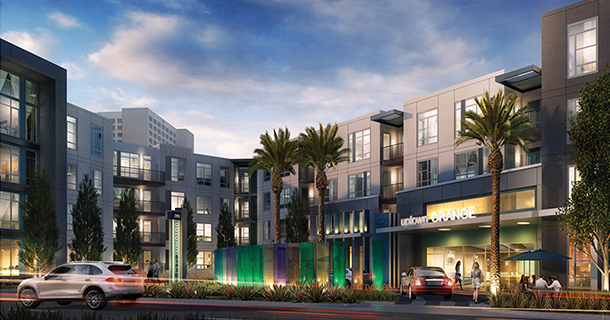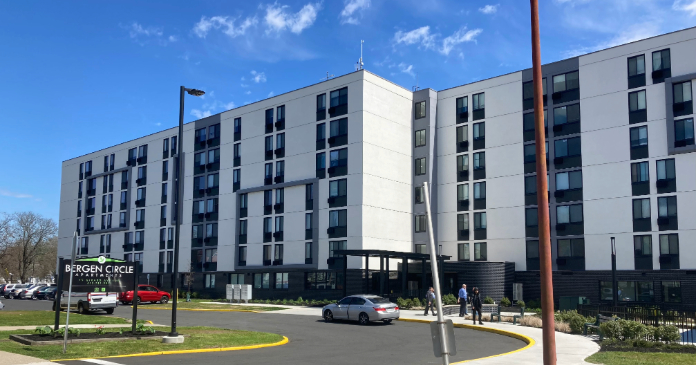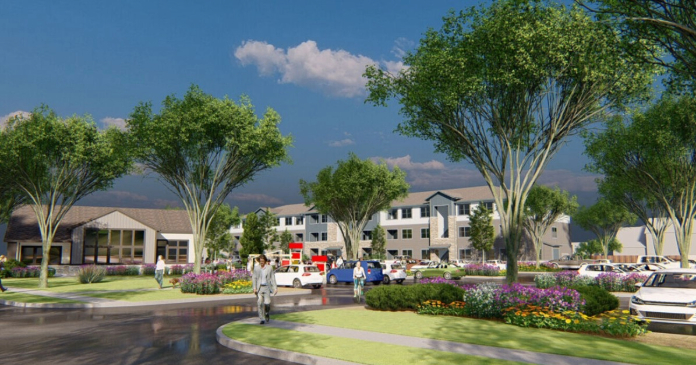
The coming-of-age of Echo Boomers, combined with disillusionment with home ownership, caused a good chunk of the population to flee to rentals. Added to the issue was constrained supply from lack of construction. The result was a commercial real estate sector at which investors eagerly threw money and bid against one another for ownership rights.
However, the multifamily assets over which investors fought was primarily infill, core product-projects and developments located in central business districts or bustling urban submarkets. Even as developers started ramping up again and bringing units on line to meet the apparently insatiable demand, “coming out of the recession, the only areas in which we saw new development were those core, infill locations,” comments M. Patrick Carroll, founder and CEO of the Carroll Organization in Atlanta.
“We hadn’t really seen a whole lot of building over the past four or five years,” adds Terry Gwin, president of Dallas-based SWBC Real Estate LLC, a company that develops multifamily properties nationwide while investing in apartment complexes in areas ranging from infill to suburban. “But what has been built has been urban infill, the downtown type of product.”
The popularity of infill, urban areas boils down to a handful of reasons. Tenant demand seemed to focus on those urban locations, meaning less risk for the investors and builders. “Investors assume it’s safer to be in a core location,” observes Carroll, whose company’s M.O. is geared toward value-add multifamily investments within the southern tier of the U.S. “Because of that, if someone was interested in investing, they’d invest in those core locations.”
Peter Muoio, senior principal with Maximus Advisors and Auction.com Research, also points out that the investment and builder focus on urban areas continues strong, especially in the so-called “gateway” cities on the coasts.
In recent months, AMLI Residential received approval to build its 334-unit AMLI Uptown Orange in Orange, Calif., on the site of an existing DoubleTree Hotel parking lot. Further north in California, Avant Housing LLC, a joint venture between AGI Capital Group, TMG Partners and CalPERS, with Essex Property Trust and Bridge Housing, is working toward building a 563-unit urban-infill apartment development on Transbay Block 9, located in San Francisco.
Meanwhile, in Pittsburgh, the 388-unit Washington Plaza Apartments changed ownership (Faros Properties bought it).
Deep in the heart of Texas-more specifically, in Houston-Behringer Harvard and Trammel Crow Co. recently launched construction of a 270-unit project known as the Muse Museum District on a two-acre site within the city’s Museum District. The Marquette Cos. began going north on the 223-unit Catalyst in Chicago’s West Loop submarket. Finally, the California Public Employees’ Retirement System acquired the 136-unit Aldyn on Riverside Boulevard and the 209-unit Ashley on 63rd Street, both in New York City.
The above activities are only the tip of the iceberg when it comes to multifamily investment and development-and all of what was mentioned are infill projects. But things are starting to change when it comes to infill, at least in some geographic markets. “Earlier in the building cycle, everything was mostly infill, mostly urban core. But that core has started to spread. At some point, it had to. There are only so many places to build,” comments Ron Johnsey, president of Dallas-based apartment research company AXIOMetrics Inc.
And on the investment side, at least in the New Jersey area, Kenneth Uranowitz, president of Gebroe-Hammer Associates, points out that both infill and suburban product is getting a lot of attention from investors. “There’s such a dearth of inventory, it’s making even the secondary and tertiary markets, and the value-add plays, even more attractive,” Uranowitz says.
There are a few reasons for the shift to suburbia and secondary and tertiary markets. Gwin says that, from a development standpoint, urban infill has become expensive to build. Land, which is skyrocketing in price seemingly everywhere, seems to be more expensive downtown rather than in the suburbs. And Uranowitz points out that infill properties are known for their high barriers to entry, which also boosts their price per pound. “We just sold a property in South Orange, N.J .called the Avenue. It’s adjacent to the Midtown Direct train,” he says. That property sold for more than $400,000 per unit, which set a record for New Jersey multifamily sales. And investors are seeing cap rates compress on those infills as well. “When those high-barrier-to-entry buildings come to market, they’re in the sub-5 percent cap rate, or even lower.”
The same seems to be trending on the West Coast. Dean Zander, senior partner with Hendricks-Berkadia’s West Los Angeles office, says that the most aggressive money is chasing the infill locations, particularly in Los Angeles and Orange County. “Infill is the number-one choice,” he says. But much like Uranowitz and Gwin have pointed out, Zander says the secondary and suburban markets are definitely on the radar screen, mainly because there isn’t enough supply to meet investors’ hunger for infill product. Just as importantly, “a lot of investors are starting to get priced out of those coastal markets.”
Developers are also finding that there is a finite market to which that infill product can be targeted. Many of the urban units coming on line are geared toward the high-end, younger, more affluent investor who has a lot of money to burn. But the overall renter profile may not fit that mold.
“When you build all-urban, you’re delivering the property at the top of the market, whereas when you develop product in the suburbs, you can spread the price points around,” explains Jay Denton, vice president of research with Axiometrics Inc. In Dallas’ Uptown market, for example, rents can top $1,400 a month for a one-bedroom unit. In suburban Plano, Texas, however, a renter could find a two-bedroom apartment for $1,100 a month. As such, “a developer can get more people who can afford that rent,” Denton observes. “That’s one reason they’re going out there.”
Another driver is that rents are starting to justify the costs of investments and development in the suburban and smaller market product. Gwin, whose company invests a great deal in Texas, points out jobs are increasing, not just within the CBDs, but in secondary and suburban markets as well. “We’re not seeing jobs just in Dallas’ CBD,” he says. “We’re seeing them in Frisco, Texas, and Alliance (in far north Fort Worth) as well.”
Hendricks-Berkadia partner Vince Norris, who operates out of the company’s Woodland Hills, Calif. office, agrees with the assessment, pointing out that with jobs and, therefore, employees moving to suburbia, there is less incentive for renters to move downtown. “Those who live in suburbia now, rather than the core central locations, won’t relocate or even travel to downtown unless they absolutely have to,” he says.
Job creation certainly fuels multifamily demand, but Maximus Advisors’ Muoio says there is much more to it these days. He explains that, in the immediate aftermath of the financial meltdown, a distaste for homeownership tended to drive occupancy rates among multifamily housing. But beginning in 2012, that changed.
“What’s happening is that we’ve started to see household formation rates, which were severely depressed, begin to pop above cyclical demand levels,” Muoio explains. In other words, what’s been happening is that younger adults are leaving their parents’ houses and looking for their own nests to feather. Roommates are starting to split up and increased immigration is also feeding demand. Though household formation has allegedly been recovering since the end of the recession in 2009, “it wasn’t until late 2011 that we really started seeing it take effect among single family and multifamily,” Muoio comments. This is why trends have been pointing to increased demand for, and acquisitions of, single-family homes. Furthermore, in certain parts of the country, more single-family permits are being pulled as the taint of home ownership appears to wane.
But no one is anticipating a flight to single-family ownership. For one thing, the borrowing qualifications for ownership continue to be quite stringent. And, Zander points out, as single-family homes prices continue to accelerate, they’ll likely price would-be homebuyers out of the market. “It’s hard for first-time buyers to move out of their apartments to buy a home,” he says. “So they’re remaining renters for longer periods.”
All of this supports the continued trend toward renter demand for multifamily. But even with this demand, effective rent growth, especially among infill multifamily has, surprisingly, slowed. It hasn’t gone negative by any stretch of the imagination, but the slowdown is apparent.
Johnsey notes that even in infill areas in which land is still available, slower rent growth overall for class A properties means more difficulty in financing new infill developments. “Some of our clients are looking for opportunities in suburban areas because of it,” he observes.
But why, if there continues to be demand for multifamily, has effective rent growth slowed? Denton points out that class A product, especially in certain geographic infill areas, is starting to be impacted by oversupply. This, in turn, means that owners of existing properties are likely to depress rental rates to boost absorption. As such, “urban core developers are starting to lower rental rates to maintain their absorption rates,” he says. “The good news is, they’re filling up.” But infill may not be quite as compelling if rents are lower. Though Zander Norris on the West Coast and Uranowitz on the East Coast note that pushing rents hasn’t resulted in much occupancy decline, Denton says core infill product is starting to feel the heat. “We suspect the urban core markets will get softer, with more rent growth in the class B and C categories, and suburbs as well,” Denton adds.
We’re also in a period in which there just isn’t all that much infill product available any more. “You have to remember that when product is acquired, it’s acquired as somewhat of a long-term investment,” explains Gwin of SWBC. “Once that apartment complex is bought, it might not come back on the market for five years or longer.” As investors were coming back to the market in 2010 and 2011, it was that core, infill product they were seeking out.”
The flight to quality among investors coming out of the recession meant core buys, Carroll observes. Infill was considered safer and less risky, as this seemed to be where much of the renter demand was centered. But the economy is recovering and job growth isn’t taking place simply in the CBDs. As such, “as the recovery carries on, investors are becoming more confident and will invest in what they perceive as riskier,” he says.
Furthermore, Gwin points out, there is only a finite amount of zoned, developable land among the infill areas. “Most of the low-hanging fruit is gone,” he says. “These days, you have to look harder and work harder to build in the infill areas. You have to tear something down or rezone it.” For example, the above-mentioned Muse Museum District in Houston is being built on Richmond Avenue on what was once the site of a 1960s multifamily complex.
In short and for now, infill is still strong and, despite cap rate and yield compression, is a preferable investment. Yet the experts point out that suburban, secondary and tertiary markets are coming into their own.
“I definitely think infill is still the darling of investors,” Hendricks-Berkadia’s Norris remarks. “But as the market continues to heat up and as developers or yield constraints come into play, those infill locations are going to be less and less desirable. Suburbia will come into its own because price points of the product there will be more advantageous.”
Author: Amy Wolff Sorter














